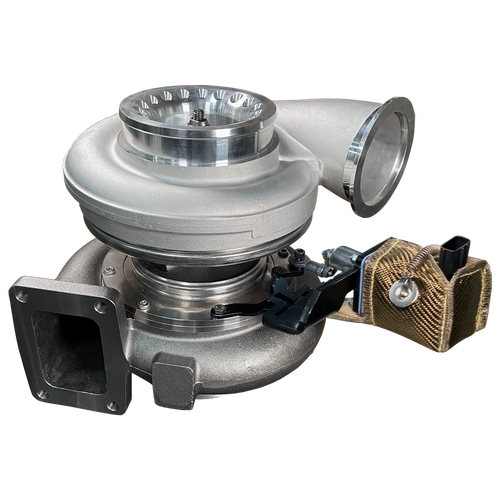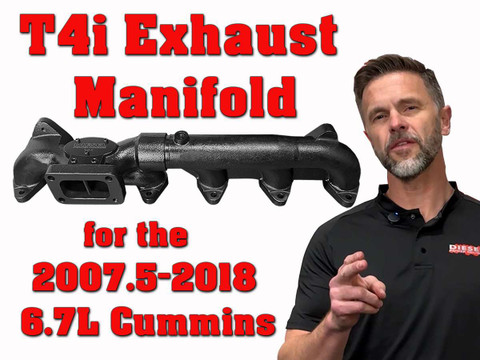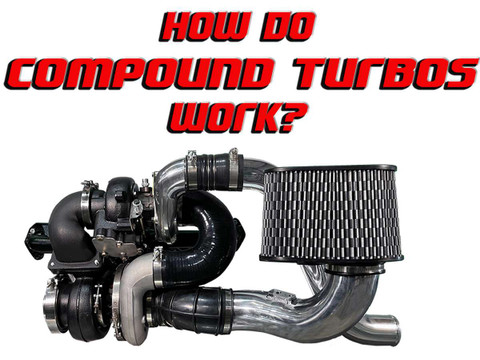Built around a proprietary variable vane system and low-friction bearing center section, the Turbonator® adjusts effective turbine A/R in real time. That means earlier boost, cooler EGT under load, and a wider usable powerband for daily driving, mountain grades, or performance use. If you want one turbo that can feel quick in town and confident with a trailer, this is it.
Why choose a VGT for your diesel truck
A Variable Geometry Turbocharger (VGT) adapts to engine demand to improve response and control:
- Better power: Adjustable vanes keep the turbo in its sweet spot across more of the rpm range, from highway cruise to heavy towing.
- Fuel savings potential: Efficient boost control helps the engine make power without excess drive pressure, which can support better fuel use under load.
- Less lag: Quick vane movement reduces delay off the line and when rolling back into the throttle.
- Cleaner operation: More complete combustion helps manage emissions and exhaust temps when used with factory systems.
- Adaptable performance: One turbo that behaves like a small unit at low speed and a larger unit at higher demand.
In short, a VGT gives you response, control, and drivability without sacrificing top-end airflow.
Introducing the Turbonator® advantage
- Patented technology: Airflow and vane geometry are engineered to improve power delivery and efficiency compared to conventional VGT layouts.
- Ball-bearing CHRA: Low-friction support for faster spool and excellent durability during repeated heat cycles.
- Built for hard use: Materials and machining are selected for high temperature stability, seal integrity, and long service life.
- Sized for your goals: Options for towing, street performance, and higher-fuel builds so you can match response and headroom.
- Proven in the field: Trusted by owners who need consistent boost control on grades, in heat, and at elevation.
How Turbonator® VGT works
Variable vanes adjust exhaust energy to the turbine. At low rpm they close to raise velocity for quick spool. As load rises they open to maintain airflow with lower drive pressure. The ball-bearing center section reduces friction so the rotating group accelerates quickly and resists heat-related wear.
Who it is for
- Towing and daily driving: Quick response in traffic and steady EGT control on long grades.
- Work trucks: Consistent boost control during sustained load and stop-and-go duty.
- Street performance: Broad powerband without giving up drivability.
Fitment
Turbonator® VGT upgrades are available for popular Cummins 5.9L (1988–2007) and 6.7L (2007.5–2024) applications. Check each product page for year-specific parts, actuator style, and mounting hardware requirements. Systems are designed to install with factory accessories and emissions equipment when used as directed.
Recommended supporting parts
- Fresh gaskets, new hardware, and high-temp anti-seize on studs
- Clean charge-air plumbing and quality intercooler boots/clamps
- EGT and boost monitoring for towing and heavy use
- Calibration update when fueling or transmission strategy changes are present
Planning a full system? Explore Cummins Exhaust Manifolds, 3rd Gen Swap Kits, Add-A-Turbo Kits, and S400 Single Turbos.
Frequently asked questions
Is the Turbonator® good for towing
Yes. The VGT’s vane control and ball-bearing CHRA support quick response and stable EGT on long grades when paired with proper cooling and maintenance.
Do I need tuning
Many trucks benefit from a calibration update to optimize fueling, vane control, and shift strategy. If injectors or pumps are upgraded, tuning is recommended.
Will it work with emissions equipment installed
The Turbonator® is designed to operate with factory emissions systems when installed as directed. Always follow local regulations.
How does a VGT compare to a fixed-geometry turbo
A VGT adapts to demand, offering earlier spool and broader torque. A fixed-geometry unit is sized for a narrower window and may trade response for peak flow or vice versa.
What else should I upgrade
Use a quality exhaust manifold, ensure leak-free charge-air paths, and add EGT/boost gauges. Consider transmission health and cooling if power goals increase.

















